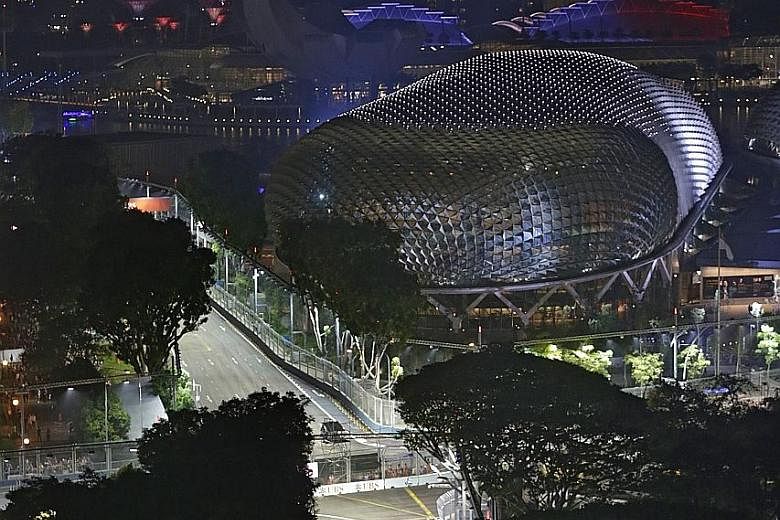Last year, amid a sluggish global economy and clouded by the haze, the Singapore Grand Prix still managed to achieve its third-highest attendance of 260,912 spectators.
It is but a sign of the Formula One night race's pulling power. A spellbinding concoction of first-rate fringe activities and pulsating street racing, played out before the mesmerising night-time Marina Bay landscape, has proven a successful formula for organisers since the inaugural race in 2008.
Talks to extend the Singapore GP contract beyond its 10th year are likely to conclude after this year's edition..
Which makes it timely for organisers to see if more can be done to ensure the event lives up to its billing as the "crown jewel" of the sport, an accolade bestowed by no less than F1 supremo Bernie Ecclestone.
After all, there is more competition on the calendar these days. The circuit has 21 races now, up from 18 in 2008, the year Singapore hosted its first race. This year saw the return of Germany and entrance of Azerbaijan. All this while the global economy is still in the doldrums.
There are also worries that Mercedes' dominance, coupled with the sport's at-times complex rules, could drive down interest in a highly technical sport.

Yuki Kuboshima, Deloitte Asia Pacific's managing partner for clients and industries, said the Singapore GP has done a great job so far, especially in "integrating the race with entertainment and tourism".
But he feels "the time has come for Singapore to innovate and think beyond the boundaries to find newer ways of utilising these events".
To be fair, the Singapore GP has done well to stay ahead of the curve with top entertainment acts rocking the venue after each race. Jay Chou, Bon Jovi, and Rihanna are just some of the stars who have raised the decibels at the Padang after the roar of the engines has died down.
-
SINGAPORE GP TV VIEWERSHIP
80.7m
It has stayed constant around this mark since the inaugural race in 2008.
-
F1 GLOBAL TV VIEWERSHIP
-175m
It has dropped from 600 million in 2008 to 425 million in 2014.
Singapore GP executive director Michael Roche had told The Straits Times previously that he intends to break new ground too, by getting more fans from the Mexican and North American markets after witnessing the successful return of the Mexican GP last November.
Experts told ST that, in a challenging climate, innovation is key to staying relevant.
One way to freshen things up, suggested Kuboshima, could be to include building the three-day festival around new themes, even those extending beyond sport, such as automobile innovation and technology.
An example would be to hold conferences on the future of transport alongside the race, which also gives car enthusiasts another platform to engage fellow aficionados.
This, Kuboshima said, is particularly relevant, seeing as driverless vehicles are all the rage now. After all, Singapore became the first country in the world to have on-demand driverless taxis two weeks ago.
By expanding the scope beyond sport, this could help organisers tap into the world automotive industry, believed to be worth US$2 trillion ($2.7 trillion).
Adjunct associate professor Lynda Wee from Nanyang Technological University's Nanyang Business School said fringe activities could also cater to non die-hard fans, who are here to simply soak up the unique atmosphere.
This could mean inviting top chefs for a food festival which fans can attend on the side, which, coupled with the launch of the first Singapore Michelin Guide, would also enhance Singapore's reputation as a food haven.
It also has to continue delivering A-list entertainment acts because tourists have come to expect them.
That the Singapore race is now followed by the Malaysian GP two weeks later also gives organisers on both sides of the Causeway an opportunity to entice motor racing fans to swing by the region to catch not just one but two F1 races.
The Singapore GP has proven its marquee status since its first flag-off, with international visitor arrivals in September experiencing an increase year-on-year, aside from a rare blip in 2014.
International TV audiences for the sport's only full night race have also stayed constant at around 80.7 million, despite the sport's global viewership dropping from 600 million in 2008 to 425 million in 2014.
The bottom line is, the Singapore GP is in pole position to thrive. But it must not take its foot off the pedal.
•The Business of Sport is a monthly series that explores the current trends and talking points of Singapore's emerging sport industry.

